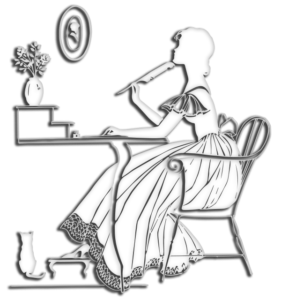It’s a sad day here in Boise, Idaho. We just lost one of our most celebrated residents, the actress Maureen O’Hara, who died Saturday at the age of 95. Ms. O’Hara was a classic movie star, known for countless leading roles. She co-starred in swashbucklers with the likes of Errol Flynn, Tyrone Power, and Douglas Fairbanks Jr. Holiday audiences enjoy her when they watch the perennial “Miracle on 34th Street.” She played the divorced mom in the original “The Parent Trap” with Hayley Mills and Brian Keith, and she had a long professional association with the director John Ford and of course, John Wayne.
It’s her first venture with Wayne, “The Quiet Man,” that I love best (it was her favorite, too). Last year, as a matter of fact, I was able to spend some time in Cong, Ireland, the quintessential Irish village in County Mayo where much of “The Quiet Man” was shot. Traveling with a friend who had never seen the 1952 film, I told her, “Oh, you’re gonna love it – it’s so fun and romantic!”
On my recommendation, my friend bought the DVD, watched it, and practically threw it back at me. “I hated it!” she said. “It was so sexist!” I hadn’t seen the film in ages, so I watched it again to see if there was something I missed. I have to admit … I loved it just as much as I ever had!
My friend found the movie distasteful primarily because of the classic scene toward the end of the story when Sean Thornton (the John Wayne character) drags his wife Mary Kate (Maureen’s character) across the field to dump her at the feet of her cheap, stubborn brother. Yes, at first glance it does look like a rather blatant display of Man manhandling Woman. But seen in context, the relationship between Sean and Mary Kate is every bit the “modern” relationship that lovers of strong female characters want to see in a romance.
Let me be clear. At no time does Sean ever hit Mary Kate. (Okay, he does playfully swat her on the butt at one point, but that doesn’t count!). Sean adores her, and she adores him. She in particular is a feisty woman, vocal and very physical. He’s a fighter by trade, but she’s a fighter by nature. What transpires between them goes far beyond their individual traits, however; Mary Kate represents Irish women of the story’s setting (1920’s), and she does them proud.
As I said, context is the key. Mary Kate lives in a world where women have very little power outside of the home. She can’t even marry until her brother gives his permission. In such a world, it would be difficult for a woman to assert her identity, much less her value, in society. But Mary Kate, as interpreted by Maureen O’Hara, does just that. She insists, no she demands that she be given all that is rightfully hers – in her case, a dowry consisting of both money and household furnishings. Sean, as portrayed by John Wayne, is very much a modern, “quiet” man. He could care less what she brings to the union; he’s just smitten with her. And when her brother refuses to pay up, Sean shrugs his shoulders. Because of his past, he has no desire to fight for something he cares little about.
That is NOT okay with Mary Kate, and she lets him know it in no uncertain terms. Over the course of the story, he comes to understand that what may not be important to him, is everything to her, and if he truly loves her, he will help her achieve her goal, no matter what it costs him. In her world, “having her things about her” is her way of saying, “I exist. I am important. I am worthy. When Sean finally gets it, he realizes the only way to force the stubborn brother to pay up is to shame him by bodily returning Mary Kate. He says in effect, “If you don’t live up to your end of the bargain, you can have her back.”
The beauty of this pivotal scene, and what makes it “modern,” is that Kate soon comprehends exactly what her husband is doing, and she’s positively thrilled by it. The ploy works and her brother finally does pay the money he owes. The look of sublime satisfaction she gives her husband as they both throw the money into a nearby fire, is absolutely a joy to behold. That is a strong woman fighting for what she needs. That is a strong man helping his woman be all that she can be. And that is the definition of love in any age.
I’m going to miss knowing you are walking around in my town, Ms. O’Hara, but I’m very glad you gave us so many delightful performances that I can re-visit on screen. And as a romance writer, I’m especially grateful for your portrayal of a strong woman who stubbornly refused to give up on what was important to her, and who found a man worthy enough to share her life. You set a high standard and I hope to meet it in every one of my stories.
Check out “The Quiet Man,” directed by John Ford and starring John Wayne and Maureen O’Hara. Let me know what you think. Do you agree with my friend that it’s a sexist movie, or do you see my take on things?





